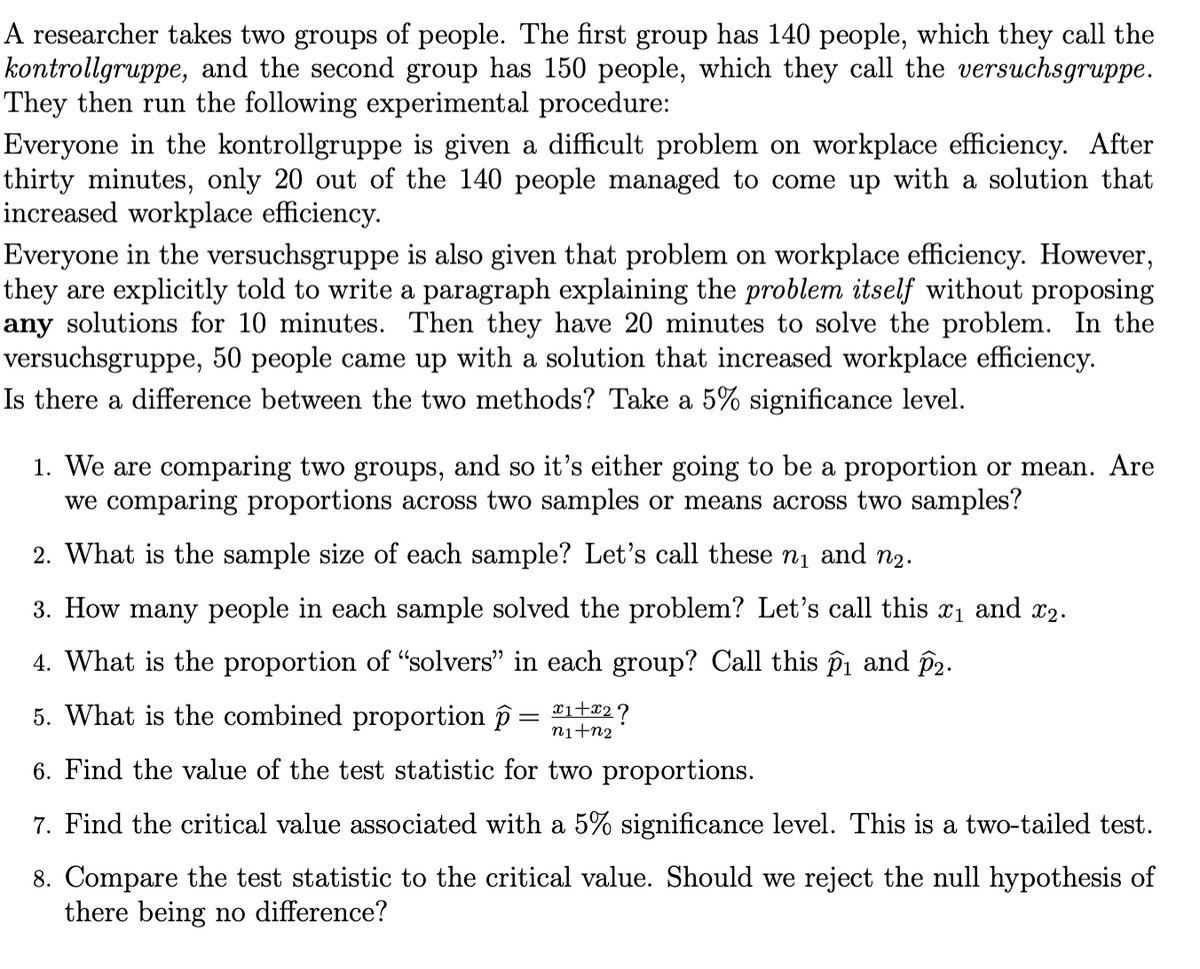A researcher takes two groups of people. The first group has 140 people, which they call the kontrollgruppe, and the second group has 150 people, which they call the versuchsgruppe. They then run the following experimental procedure: Everyone in the kontrollgruppe is given a difficult problem on workplace efficiency. After thirty minutes, only 20 out of the 140 people managed to come up with a solution that increased workplace efficiency. Everyone in the versuchsgruppe is also given that problem on workplace efficiency. However, they are explicitly told to write a paragraph explaining the problem itself without proposing any solutions for 10 minutes. Then they have 20 minutes to solve the problem. In the versuchsgruppe, 50 people came up with a solution that increased workplace efficiency. Is there a difference between the two methods? Take a 5% significance level. 1. We are comparing two groups, and so it's either going to be a proportion or mean. Are we comparing proportions across two samples or means across two samples? 2. What is the sample size of each sample? Let's call these n1 and n2. 3. How many people in each sample solved the problem? Let's call this x1 and x2. 4. What is the proportion of “solvers" in each group? Call this Pi and p2. 5. What is the combined proportion p= 1t2? ni+n2 6. Find the value of the test statistic for two proportions. 7. Find the critical value associated with a 5% significance level. This is a two-tailed test. 8. Compare the test statistic to the critical value. Should we reject the null hypothesis of there being no difference?
Percentage
A percentage is a number indicated as a fraction of 100. It is a dimensionless number often expressed using the symbol %.
Algebraic Expressions
In mathematics, an algebraic expression consists of constant(s), variable(s), and mathematical operators. It is made up of terms.
Numbers
Numbers are some measures used for counting. They can be compared one with another to know its position in the number line and determine which one is greater or lesser than the other.
Subtraction
Before we begin to understand the subtraction of algebraic expressions, we need to list out a few things that form the basis of algebra.
Addition
Before we begin to understand the addition of algebraic expressions, we need to list out a few things that form the basis of algebra.
Please show steps and answer all questions.

Step by step
Solved in 2 steps




